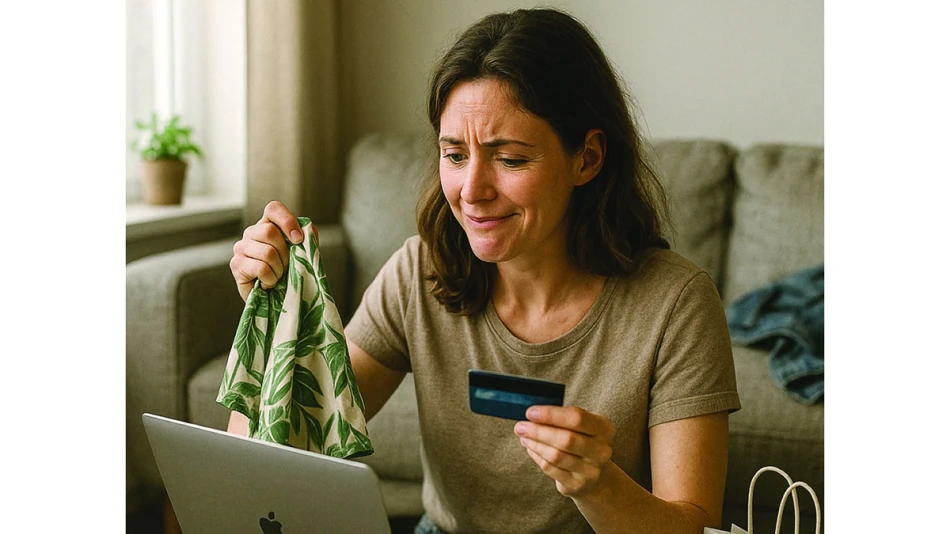
Emotional Shopping: Momentary Gratification that Drains Budgets, Leads to Compulsive Buying Syndrome
Emotional Shopping: The Hidden Mental Health Crisis Draining Bank Accounts During Holiday Seasons
Mental health experts are sounding alarms about a growing phenomenon called "emotional shopping" that intensifies during summer holidays and vacation periods. This behavior, driven by psychological needs rather than actual necessity, is leading consumers to spend thousands on products they don't need while potentially masking deeper mental health issues including compulsive buying disorder and depression.
The Psychology Behind Impulse Spending
Emotional shopping represents a fundamental shift from rational consumer behavior to psychologically-driven purchasing decisions. Unlike traditional shopping based on planned needs, this pattern emerges when individuals use retail therapy to regulate internal emotions such as sadness, anxiety, excessive joy, or boredom.
Dr. Walid Omar, a psychiatric specialist, explains that this behavior stems from four key psychological drivers: immediate dopamine stimulation that creates temporary feelings of happiness or victory, escape mechanisms from negative emotions like loneliness or anxiety, enhanced sense of control and self-identity through purchases, and using shopping as psychological rewards after achievements or difficult situations.
Gender-Specific Shopping Patterns
Research reveals distinct differences between male and female emotional shopping behaviors. Women typically turn to shopping to release stress or sadness, focusing primarily on clothing and cosmetics. Men, conversely, shop to combat boredom or assert their identity, particularly through electronics and automotive purchases.
When Shopping Becomes a Mental Health Emergency
Clinical psychologist Dr. Mirna Shoubah identifies six critical warning signs that indicate emotional shopping has crossed into dangerous territory requiring professional intervention:
Compulsive urgency to purchase despite attempts to stop, continued spending despite financial deterioration or family problems, post-purchase guilt and anxiety, shopping as escape from negative emotions, secretive shopping or lying about purchases, and withdrawal-like symptoms when attempting to abstain from buying, including severe nervousness or anxiety indicating addictive behavioral structures.
Real Consumer Stories Reveal the Scope
Case studies illustrate the financial impact of emotional shopping. One consumer reported spending over 1,000 dirhams on unnecessary items during emotional periods, while another individual spent 7,000 dirhams on electronics during a vacation-induced spending spree, with many purchases remaining unopened.
A 29-year-old professional described purchasing over 15 beauty and clothing items after job loss, most of which remain unused, as she sought feelings of control amid emotional chaos.
Technology Amplifies the Problem
The digital revolution has transformed emotional shopping from a mall-based activity into a 24/7 accessible behavior. Retail expert Dr. Sohail Al-Bustaki warns that artificial intelligence now analyzes user data to determine emotional states—whether sadness, joy, or anxiety—enabling e-commerce platforms to target vulnerable consumers with precisely-timed offers.
This technological sophistication means that online retailers can identify individual purchasing patterns, preferred brands, and emotional triggers, creating a perfect storm for compulsive buying behavior.
The Holiday Shopping Trap
Summer holidays and vacation periods create ideal conditions for emotional shopping due to increased social stress, feelings of loneliness, boredom, available free time, and intensive marketing campaigns that link purchasing with happiness and celebration.
Treatment and Prevention Strategies
Mental health professionals recommend Cognitive Behavioral Therapy (CBT) as an effective treatment approach. This therapy helps individuals recognize thoughts preceding shopping behavior, evaluate these thoughts, and replace them with more balanced thinking patterns while learning self-control techniques and emotional regulation.
Practical Prevention Techniques
Experts suggest several immediate strategies: implementing 24-hour waiting periods before purchases to reduce urgency feelings, creating written lists of genuine needs before shopping, removing credit cards during casual outings, deleting shopping apps from phones, using cash-only budgets, and maintaining purchase diaries tracking spending alongside accompanying emotions.
The Financial Services Response
The phenomenon has implications beyond individual mental health. Financial institutions and retailers are recognizing the need for responsible marketing practices, particularly during emotionally vulnerable periods. Some experts advocate for integrated psychological and financial awareness campaigns that address the emotional roots of spending behavior rather than focusing solely on budget management.
Looking Forward: A Societal Challenge
Emotional shopping represents a convergence of mental health challenges, technological manipulation, and consumer culture pressures. As artificial intelligence becomes more sophisticated in targeting vulnerable consumers, the need for comprehensive approaches combining psychological support, financial education, and ethical marketing standards becomes increasingly urgent.
The solution requires recognition that shopping behavior often reflects psychological pain or internal conflict rather than simple material desires. Family intervention should prioritize understanding before correction, containment before modification, and communication before behavioral change, as human relationships must precede behavioral interventions.
Most Viewed News

 Sara Khaled
Sara Khaled






